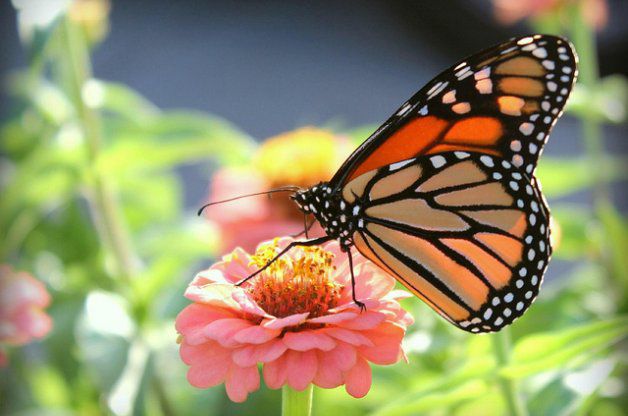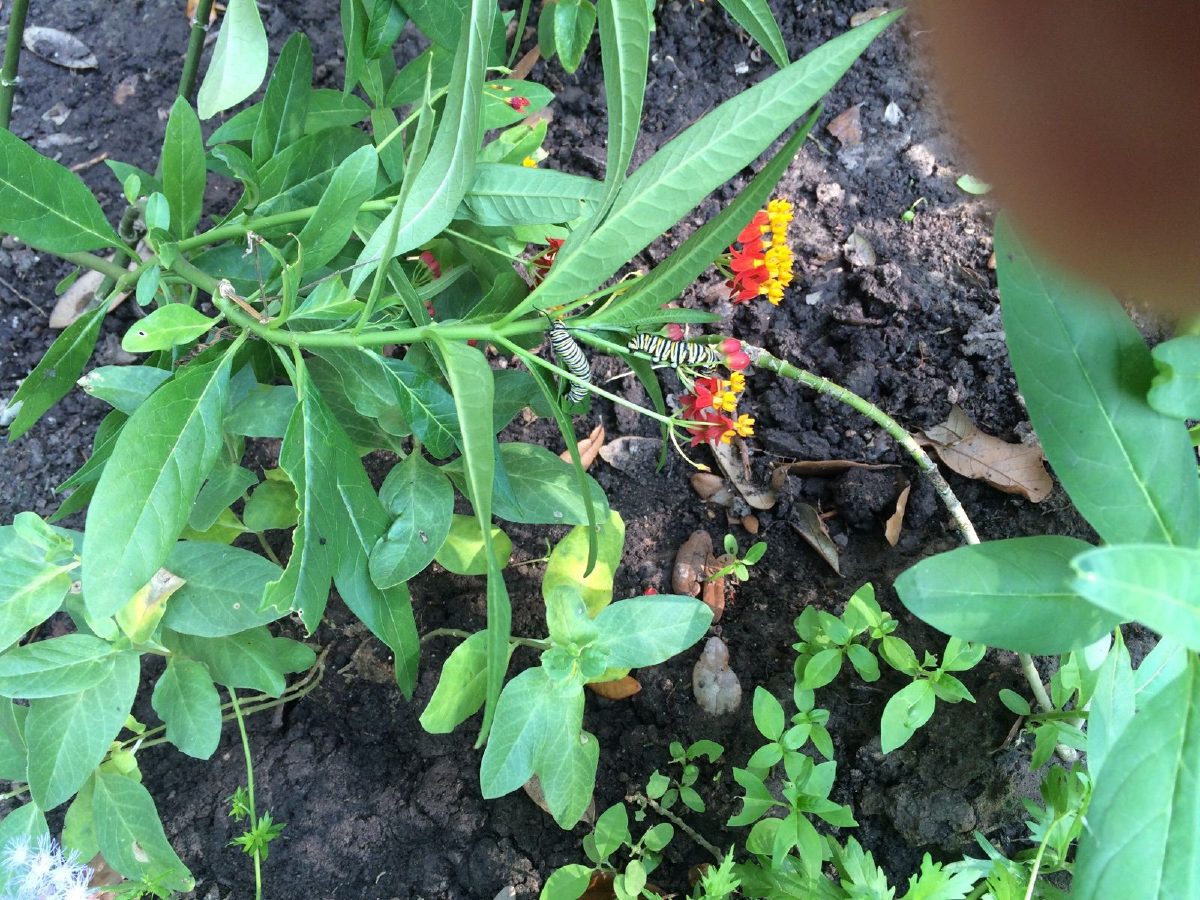BY LORI MURRAY
Early this year I learned the extent of the plight of the beautiful monarch butterfly whose presence in our yard has provided us with so much pleasure over the years. The statistic that impressed me the most was that the monarch population has dropped by 90% over the past several years, particularly when I read that in human population terms the drop was the equivalent of losing every person in the U.S. except for those in Florida and Ohio. (www.aquaorg/monarchs )
When I read that one of the actions we here in the Valley could take was to create a monarch “way station,” I decided to plant a butterfly garden in my back yard to provide some of the essentials for their survival. ( See www.MonarchWatch.org for order information and to download a guide in PDF format.) Monarch Watch suggests setting aside 100 square feet , and I only had half of that, but in reality, any space will help. I turned a spare flower bed into a butterfly garden that, unlike my previous efforts, would provide more than nectar plants. Although it was possible to order seeds for some of the important plants from Monarch Watch, I used the actual plants I could find right here at home.
In March, I started with mistflower and butterfly weed (asclepias tuberose), a milkweed common to our area; both are available at local nurseries like Grimsell’s. I knew mistflower’s nectar would draw monarchs to my yard, but I also planted butterfly weed because monarchs lay their eggs only on milkweed, and the plant is essential to sustain the caterpillar. In fact, I learned that I should plan on one WHOLE milkweed plant for each caterpillar’s consumption. Little by little, I added to my garden over the rest of March and April. I had about 10 butterfly weeds until I attended a native plant project lecture in Weslaco and was able to purchase a Prairie milkweed native to Cameron County. I also knew from previous experience that monarchs liked penta so I added a couple of those for nectar and also for color to please myself. I also planted scarlet sage (salvia coccinea) from the Master Gardeners’ plant sale in April. Just for the fun of it, I put some dill and fennel and also some lantana in adjacent beds. Then I waited. Two butterflies showed up in April – probably first generations from Mexico – and occasionally I would see a third monarch dipping up and down in the yard. The plants were flourishing as the sun came around to warm the soil and encourage growth. Then one afternoon I went outside to show my husband where I’d planted the salvia and when I looked down, there they were!!! TWO Monarch caterpillars!! I ran for my phone and took several pictures. What a thrill!
The egg to adult metamorphosis occurs during warm temperatures in as little as 25 days, but sadly fewer than 10% of monarch eggs and caterpillars usually survive. I haven’t seen my caterpillars in a few days, although I can see that milkweed is being eaten, so I guess I’ll have to wait to see if I get a chrysalis or any butterflies. The entire experience has been rewarding, however, and even if I don’t get any adults, I’ve enjoyed looking outside and seeing those colorful creatures dipping and swooping across my yard. The milkweeds essential to our monarch’s breeding have decreased dramatically due to pesticides and land development. Their wintering habitat, a pine forest in Mexico, is being destroyed by logging. But we are can easily add a milkweed or two to our own flower beds and nurture these bright and beautiful creatures for the enjoyment of our children and grandchildren.





